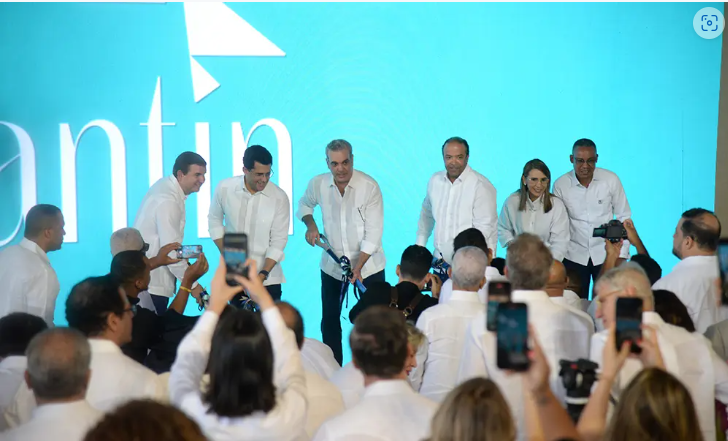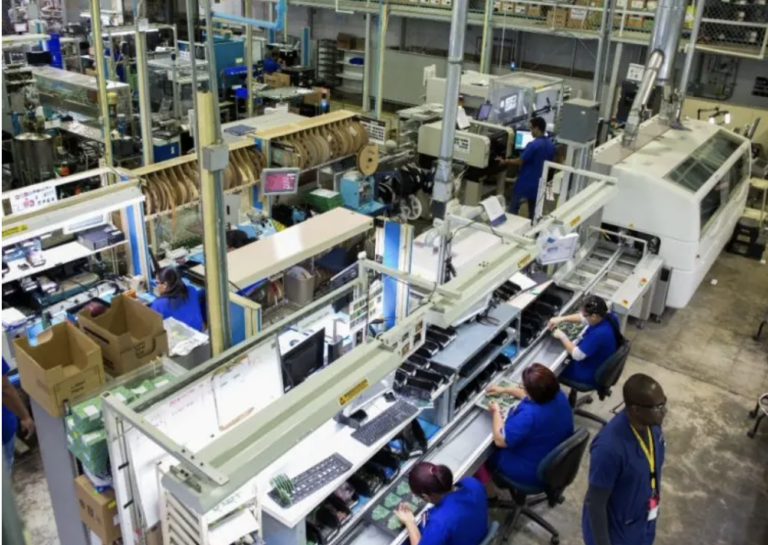Al cumplir los primeros 12 meses de la presidencia de Luis Abinader, quienes participan la actividad turística pueden decir, sin exagerar, que el mandatario ha cumplido con el sector, a pesar de las negativas consecuencias y las grandes limitaciones impuestas al gobierno por la pandemia y el impacto de la crisis mundial.
Desde los años 90 los líderes del turismo, la Asociación de Hoteles y Turismo de la República Dominicana (ASONAHORES) y periodistas, entre los que me encuentro, habían sugerido insistentemente cada año la necesidad de crear una instancia de coordinación de las políticas y acciones de las instituciones públicas que inciden en esta actividad.
Dos componentes importantes de esta decisión reclamada durante casi tres décadas, era que en esa instancia participaran instituciones representativas del sector privado turístico y que fuera dirigida por el presidente de la República, para asegurar que la coordinación de las políticas y programas fuera efectiva, y se tomaran en cuenta las sugerencias de las empresas que invierten y manejan el día a día del turismo local y mundial, y por lo tanto mejor conocen el tema.
Esta propuesta surgió como respuesta a los continuos y a veces graves problemas que obstaculizaban las inversiones y el desarrollo de la industria, que muchas veces se originaban en las frecuentes y absurdas contradicciones que surgían entre ministros y directores generales, casi siempre causadas por la ignorancia, las pugnas de poder y hasta las confrontaciones personales.
El presidente aún no había calentado bien su sillón en el Palacio Nacional cuando anunció (el 25 de agosto) su estrategia para la recuperación del turismo basada en los siguientes ejes: 1.Gobernanza (creación del Gabinete de Turismo); 2.Gestión de riesgo (protocolos sanitarios para negocios locales y turistas que ingresan al país); 3.Apoyo económico (Medidas económicas en apoyo a la sostenibilidad y despegue del sector), y 4.Promoción (promoción del país como destino seguro). El principal ingrediente y la novedad de esta estrategia es el gabinete, porque es la decisión de largo plazo, ya que gestión de riesgo, promoción y apoyo económico siempre ha estado presente aunque reconozco que nunca con la intensidad de hoy.
La creación del Gabinete de Turismo, que representa una nueva forma de integrar al sector público y privado (quinto pilar del programa de Gobierno del PRM) y dirigido por el Presidente de la República, es la primera gran decisión de Abinader para este sector y una señal de la importancia que el mandatario le asigna, y cito de nuevo sus palabra porque definen su visión, cuando dijo que el gobierno “reconoce que el turismo es uno de los sectores estratégicos en la República Dominicana, en cuanto a su potencial de atracción de inversión extranjera, su capacidad de generación de empleos, divisas y valor agregado”.
Ese día también anunció una asignación de RD$420 millones para promoción y acuerdos con aerolíneas para asegurar rutas, apoyo económico, flexibilización fiscal, medidas monetarias, un fondo de garantías, apoyo crediticio para la pequeña y mediana empresa, y la creación de un seguro de salud a cargo del Estado para turistas que puedan verse afectados por el COVID-19.
La estrategia de Abinader para el turismo ha funcionado. La Organización Mundial del Turismo ha reconocido el país como un ejemplo de cómo manejar este sector en medio de la crisis. Las medidas adoptadas desde el Gabinete de Turismo han sido efectivas, los números comienzan a subir y comienza a sentirse la presencia del sector en la economía. Este es tema de otro artículo.
NOTA
Puedo citar como ejemplo, la charla de Enrique de Marchena en el 2005 en un encuentro con el Presidente Leonel Fernández:
Cualquier ejercicio “es intrascendente si no es un proceso metódico y participativo que define objetivos e identifica las acciones para alcanzarlos, pero que surge como un compromiso colectivo de la comunidad turística, comenzando por el Estado.
Una de las preguntas cruciales es qué hacer para lograrlo. Nuestra sugerencia es la siguiente:
- Considerando la trascendencia y en seguimiento del “Pacto para el Desarrollo y Competitividad del Turismo”, que se presentó al país desde el Despacho del Presidente de la República, proponemos crear una comisión ad hoc dentro del Consejo Nacional de Competitividad, con un coordinador técnico para dar soporte y seguimiento al proceso; en el entendido de que como Comisión para el Plan de Desarrollo y Competitividad del Turismo, la misma se reportará al Presidente de la República.
- Participación institucional en del sector público y privado con la siguiente composición: Gobierno: SECTUR, OP, MEDIO AMBIENTE, ONAPLAN, INFOTEP, CULTURA, CNC y un representante del Senado y la Cámara de Diputados. Sector Privado: ASONAHORES, ALA, AEROPUERTOS, ADOMPRETUR y un representante de las Asociaciones de hoteles de Boca Chica, Juan Dolio, La Romana-Bayahibe, Este, Samaná y Puerto Plata.
- Obtener asistencia técnica de la OMT, PNUD, BID y BM
- Dar un amplio mandato, con tiempos definidos, a la Comisión para que elabore un proyecto de Plan de Desarrollo Turístico 2006-2015 con sus diferentes componentes.
- Crear en la Comisión un grupo de trabajo con técnicos designados por las entidades participantes que con la asesoría internacional elabore la documentación y propuestas que debe aprobar la Comisión.
Fuente: Resumen Turismo[:en]
Upon fulfilling the first 12 months of the presidency of Luis Abinader, those who participate in tourist activity can say, without exaggeration, that the president has complied with the sector, despite the negative consequences and the great limitations imposed on the government by the pandemic and the impact of the global crisis.
Since the 90s, tourism leaders, the Association of Hotels and Tourism of the Dominican Republic (ASONAHORES), and journalists, among whom I am, had insistently suggested each year the need to create an instance of coordination of the policies and actions of public institutions that influence this activity.
Two important components of this decision, demanded for almost three decades, was that representative institutions of the tourism private sector participate in that instance and that it be directed by the President of the Republic, to ensure that the coordination of policies and programs was effective and that They will take into account the suggestions of companies that invest and manage the day-to-day local and world tourism, and therefore they know the subject better.
This proposal arose in response to the continuous and sometimes serious problems that hindered investment and the development of the industry, which often originated in the frequent and absurd contradictions that arose between ministers and general directors, almost always caused by ignorance, power struggles, and even personal confrontations.
The president had not yet warmed up his chair in the National Palace when he announced (on August 25) his strategy for the recovery of tourism based on the following axes: 1. Governance (creation of the Tourism Cabinet); 2.Risk management (health protocols for local businesses and tourists entering the country); 3. Economic support (Economic measures to support the sustainability and take-off of the sector), and 4. Promotion (promotion of the country as a safe destination). The main ingredient and the novelty of this strategy is the cabinet, because it is the long-term decision, since risk management, promotion and financial support have always been present although I recognize that it has never been with the intensity of today.
The creation of the Tourism Cabinet, which represents a new way of integrating the public and private sectors (fifth pillar of the PRM Government program) and directed by the President of the Republic, is Abinader’s first major decision for this sector and a sign of the importance that the president assigns to it, and I quote his words again because they define his vision, when he said that the government “recognizes that tourism is one of the strategic sectors in the Dominican Republic, in terms of its potential to attract tourists. foreign investment, its ability to generate jobs, foreign exchange, and added value ”.
That day he also announced an allocation of RD $ 420 million for promotion and agreements with airlines to ensure routes, economic support, fiscal flexibility, monetary measures, a guarantee fund, credit support for small and medium-sized businesses, and the creation of insurance for the health care provided by the State for tourists who may be affected by COVID-19.
Abinader’s strategy for tourism has worked. The World Tourism Organization has recognized the country as an example of how to manage this sector in the midst of the crisis. The measures adopted by the Tourism Cabinet have been effective, the numbers begin to rise and the presence of the sector in the economy is beginning to be felt. This is the subject of another article.
NOTE
- I can cite as an example, Enrique De Marchena’s talked in 2005 in a meeting with President Leonel Fernández:
- Any exercise “is inconsequential if it is not a methodical and participatory process that defines objectives and identifies the actions to achieve them, but that arises as a collective commitment of the tourist community, starting with the State.
- One of the crucial questions is what to do to achieve it. Our suggestion is as follows:
- Considering the importance and in pursuit of the «Pact for the Development and Competitiveness of Tourism», which was presented to the country from the Office of the President of the Republic, we propose to create an ad hoc commission within the National Competitiveness Council, with a technical coordinator to give support and follow-up to the process; with the understanding that as a Commission for the Tourism Development and Competitiveness Plan, it will report to the President of the Dominican Republic.
- Institutional participation in the public and private sector with the following composition: Government: SECTUR, OP, ENVIRONMENT, ONAPLAN, INFOTEP, CULTURE, CNC, and a representative of the Senate and the Chamber of Deputies. Private Sector: ASONAHORES, ALA, AIRPORTS, ADOMPRETUR and a representative of the Boca Chica, Juan Dolio, La Romana-Bayahibe, Este, Samaná and Puerto Plata Hotel Associations.
Obtain technical assistance from UNWTO, UNDP, IDB, and WB
Give a broad mandate, with defined times, to the Commission to prepare a draft Tourism Development Plan 2006-2015 with its different components.
Create in the Commission a working group with technicians appointed by the participating entities who, with international advice, prepare the documentation and proposals that the Commission must approve.
Source: Resumen Turismo[:]


